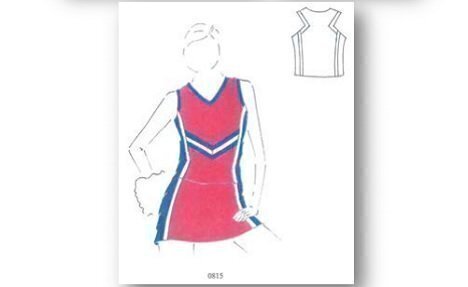Lyle Denniston, Constitution Daily’s Supreme Court correspondent, looks at arguments in a clothing copyright case that featured Justice Breyer as a fashion critic on Monday.

It wasn’t planned that way, but the Supreme Court spent a lively hour on Monday – Halloween – talking about costumes. And Justice Stephen G. Breyer showed up, so to speak, in the improbable guise of a fashion critic. That was how an argument about copyright law went, but there was no reliable way to judge how the court might rule.
The case before the Justices, Star Athletica v. Varsity Brands, is all about clothing design – specifically, the design of uniforms that cheerleaders wear for college and school sporting events. But the entire fashion industry is keenly interested, because the court may wind up sorting out who gets to exploit original creations not just in sportswear, but in high-class frocks or gowns and original design wear of all kinds.
The argument ranged widely over legal theory and what a confusing federal law actually means, but what seemed to fascinate the Justices the most was the message that clothing sends – as in a familiar old phrase, “the clothes make the man,” or, as it may be, the woman.
One side in the dispute, Star Athletica, which wants to make sportswear without being inhibited by copyright lawsuits, was arguing that, if the design of clothing tells what grouping a person belongs in – a uniform that says military, for example – that is a function of that style of dress, so it should not be protected by copyright. The design, in other words, can’t be separated from its usefulness.
The other side, Varsity Brands, which dominates the cheerleader uniform market and vigorously polices its copyrights, was arguing just the opposite – that is, if a design one wears does tell the world what one believes himself or herself to be, that is a form of creative expression that should be eligible for copyright.
Justice Breyer, who undertook to suggest “what fashion is about” and “always has been in history,” seemed to be leaning both ways with what he said at a critical point in the argument. “A normal reason for wearing clothes,” he said, is “making a statement…[women and men] are saying who they are. The clothes on the hanger do nothing; the clothes on the woman do everything.”
But was he saying that this exhibition of one’s persona or image is merely the usefulness of the chosen garment (siding with Star Athletica), or was he saying that the uniqueness of that expression is like the familiarly copyrightable turn of a clever phrase or the lilt of a particular tune (siding with Varsity)?
Whatever his intended meaning, it was apparent that his comments fairly well summed up the sentiments on the bench, with most if not all of the members of the court at times seeming to be pulled one way, then the other.
This is often what happens when the governing federal law that is at stake in a case is not very clear, leading the Justices to start imagining alternative ways to think about the problem. The favorite mode of doing so on Monday, it turned out, was to ponder the legal meaning of camouflaged clothing of the kind that combat soldiers (and hunters) wear.
If one conjures up a special arrangement of the greens and browns of camouflage, does that do anything other than hide the soldier or the hunter? In other words, is its utility everything (and thus no copyright)? Or does it hide the soldier or the hunter in a very special way that no alternative design would (and thus copyrightable)?
In the end, though, the meaning of camouflage did not serve very well to clarify the legal alternatives the court is facing. It might be that, again, it would be Justice Breyer who hit upon something that just might become the core of a decision.
The fashion industry, he said, knowingly, for decades has had to get along without copyright protection for garment design. So, he went on, if the court were suddenly to say “that dresses are copyrightable” in their design, “we are into monopoly, big-time.” The same, he said, might be in the offing for men’s suits.
He promptly stirred the support of Justice Sonia Sotomayor, who suggested that the weapon of copyright in the hands of the garment industry would mean “killing knock-offs” – the lower-priced imitations that middle America has available from discounters.
That is, of course, as much a cultural as a legal matter. If the copyright law under review does not yield a clear meaning, the Justices just might be drawn toward thwarting monopoly profits in the garment market.
Legendary journalist Lyle Denniston is Constitution Daily’s Supreme Court correspondent. Denniston has written for us as a contributor since June 2011 and he has covered the Supreme Court since 1958. His work also appears on lyldenlawnews.com.







